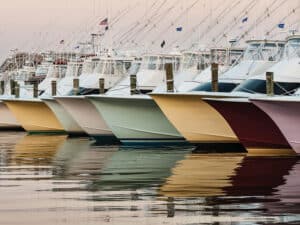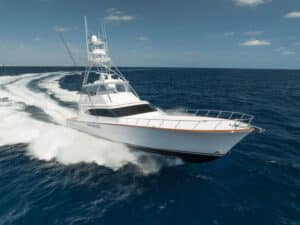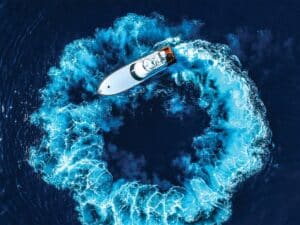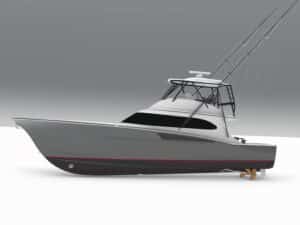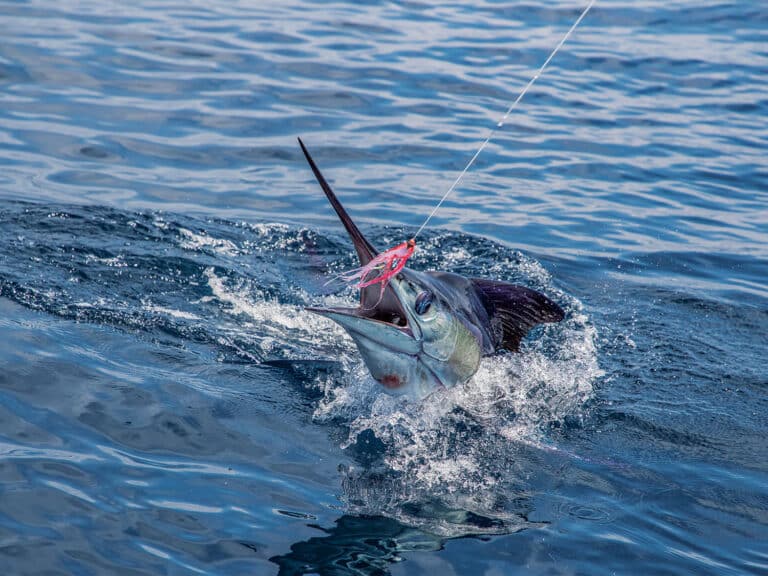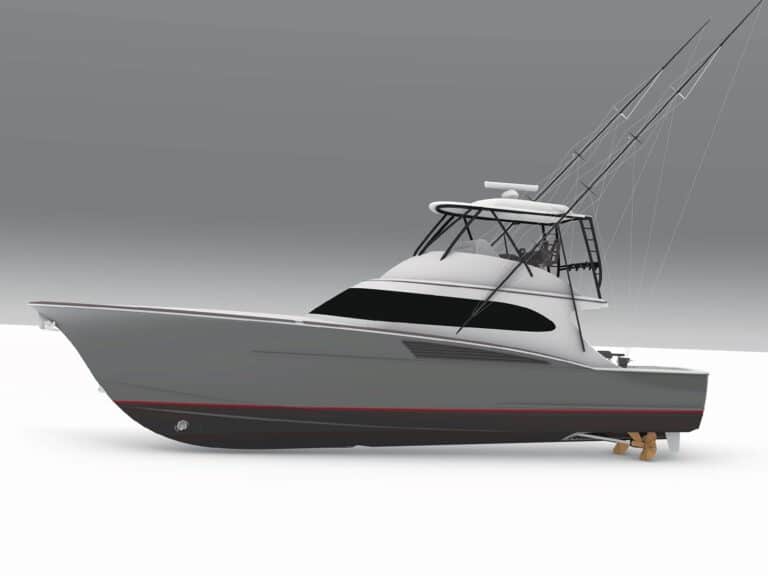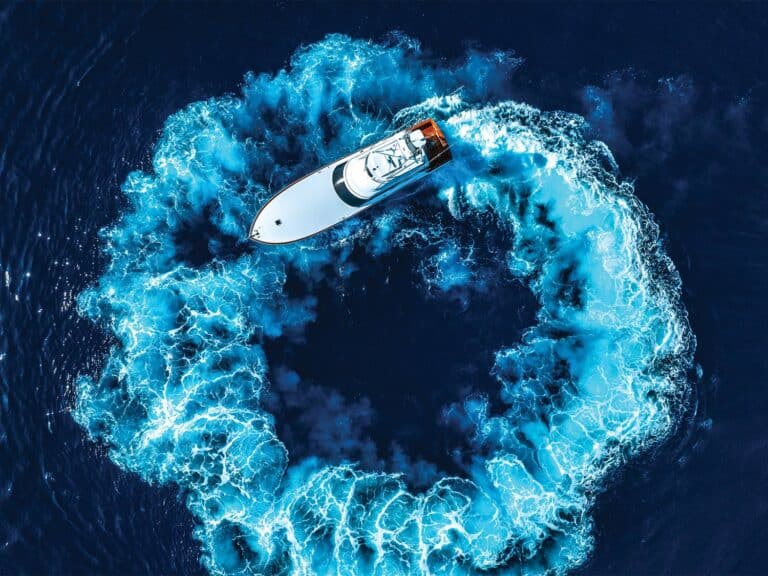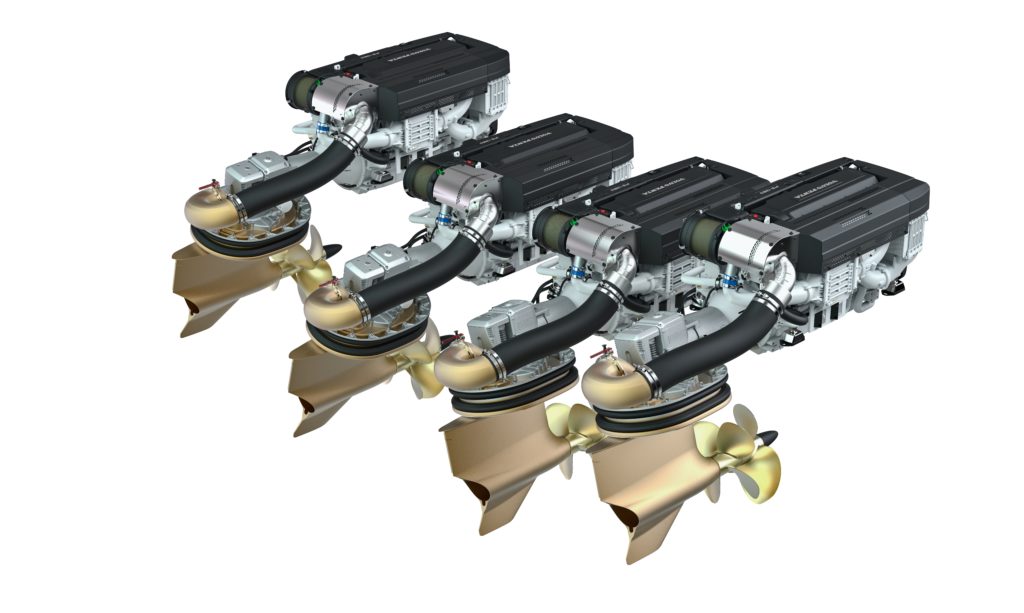
Volvo Penta has reached the vaunted 1,000 hp category with its new marine leisure diesel engine: the D13-1000 inboard and D13-IPS1350, mated with Volvo Penta’s pod drive. The D13-IPS1350 is so named because its 1,000 hp engine delivers to the water the equivalent power to a 1,350 hp engine with inboard running gear, according to Volvo Penta.
Designed for multiple engine applications in boats as small as 60 feet and as large as 120 feet in length, the 12.8-liter, inline-6 twin-turbo Volvo Penta diesel brings forward a number of improvements that boost horsepower and durability. It is designed to go head to head with competitive 1,000 hp marine diesels from brands such as Caterpillar and MAN.
“Our boat partners have been asking for more horsepower, and this is what we delivered.” says Jens Bering, vice president of sales for Volvo Penta of the Americas in Chesapeake, Virginia. “The outside might look the same as the 900 hp D13-900, but this engine required many new elements inside.”
It includes more-efficient new fuel injectors, intake manifold and cam shaft for greater power, as well as a beefed-up crank shaft, steel pistons, connecting rods and cooling system for durability.
Volvo Penta also needed to upgrade the transmission — the IPS30 — to accept the additional 100 ponies. Improvements include new high-strength pinion gears, vertical shaft, and housing; new oil pump; and new bearings.
To ensure a high level of reliability, Volvo conducted extensive field testing, says Bering. “Because of our involvement in the commercial marine segment, especially in the North Sea, we can put on a lot of hours on an engine in harsh conditions at a rapid pace,” he adds.
It’s one thing to increase power, but quite another to maintain high fuel efficiency, says Bering. “Volvo Penta is really good at squeezing maximum efficiency from a motor,” he says.
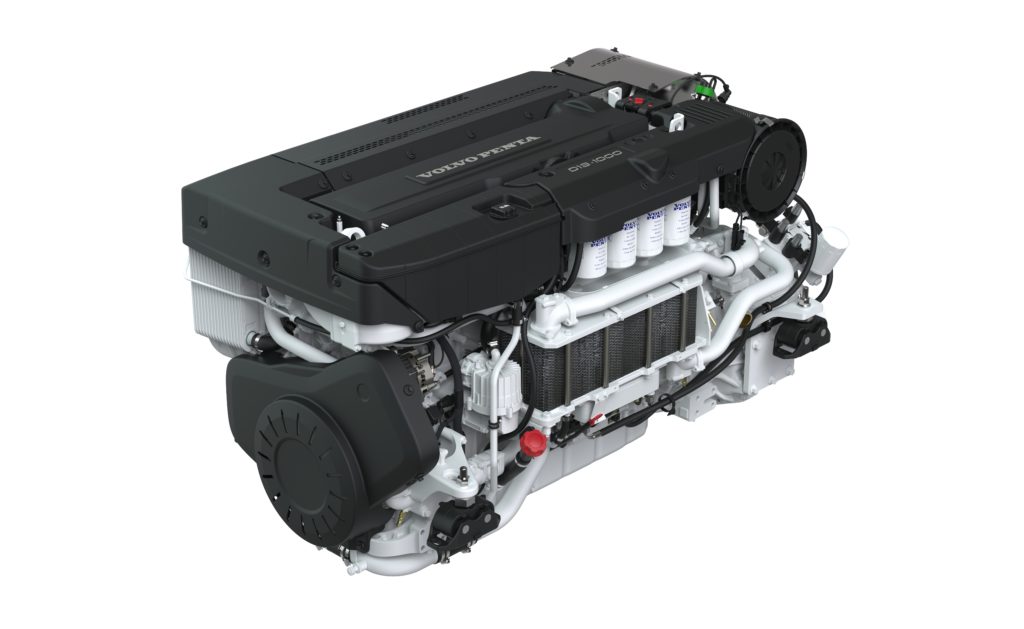
Volvo Penta benefits greatly from the diesel technology in its commercial truck division, where fuel efficiency is not just desirable, but mandated by governments around the world, Bering explains. That technology transfers over to the brand’s marine diesel development, resulting in an advantage in fuel efficiency versus competitive marine diesels, he adds.
Bering cites the company’s comparison test of a twin D13-IPS1350 system against twin 1,360 hp competitive inboard diesels in a 68-footer. The D13-IPS1350 system was lighter, offered greater displacement and enjoyed 50 percent better fuel efficiency in the 17 to 40 mph range. A part of that is due to the IPS drives, which created less drag and are more efficient in pushing the boat than inboard running gear.
“We are very keen on torque and fast throttle response,” says Bering. To deliver this, the new engines use Volvo Penta’s twin, dual-entry turbocharging system to maximize torque at a relatively low rpm, he reveals. Both new diesel propulsion systems deliver approximately 2,400 ft. lb. of torque at 900 rpm. Maximum rpm is 2,400.
This results in strong acceleration. In the test mentioned earlier, the D13-IPS1350-powered 68-footer reached 25 knots 5.4 seconds quicker that the comparison boat. Again, however, the greater efficiency of the IPS drives are factors that cannot be ignored when it comes to quicker acceleration versus inboards.
Both new Volvos will be available for repower projects, as well as new boat construction. In fact, as of press time, Home Run, a 61-foot Spencer sport-fisher, was undergoing a refit with twin D13-IPS1350s, replacing its original 900 hp D13-IPS1200 diesels. This new marine engine definitely represents the big daddy of Volvo Penta’s diesel lineup.
